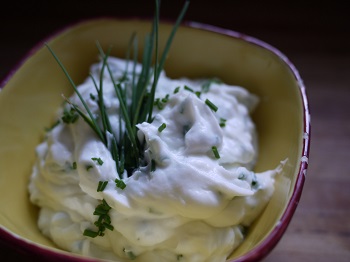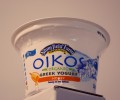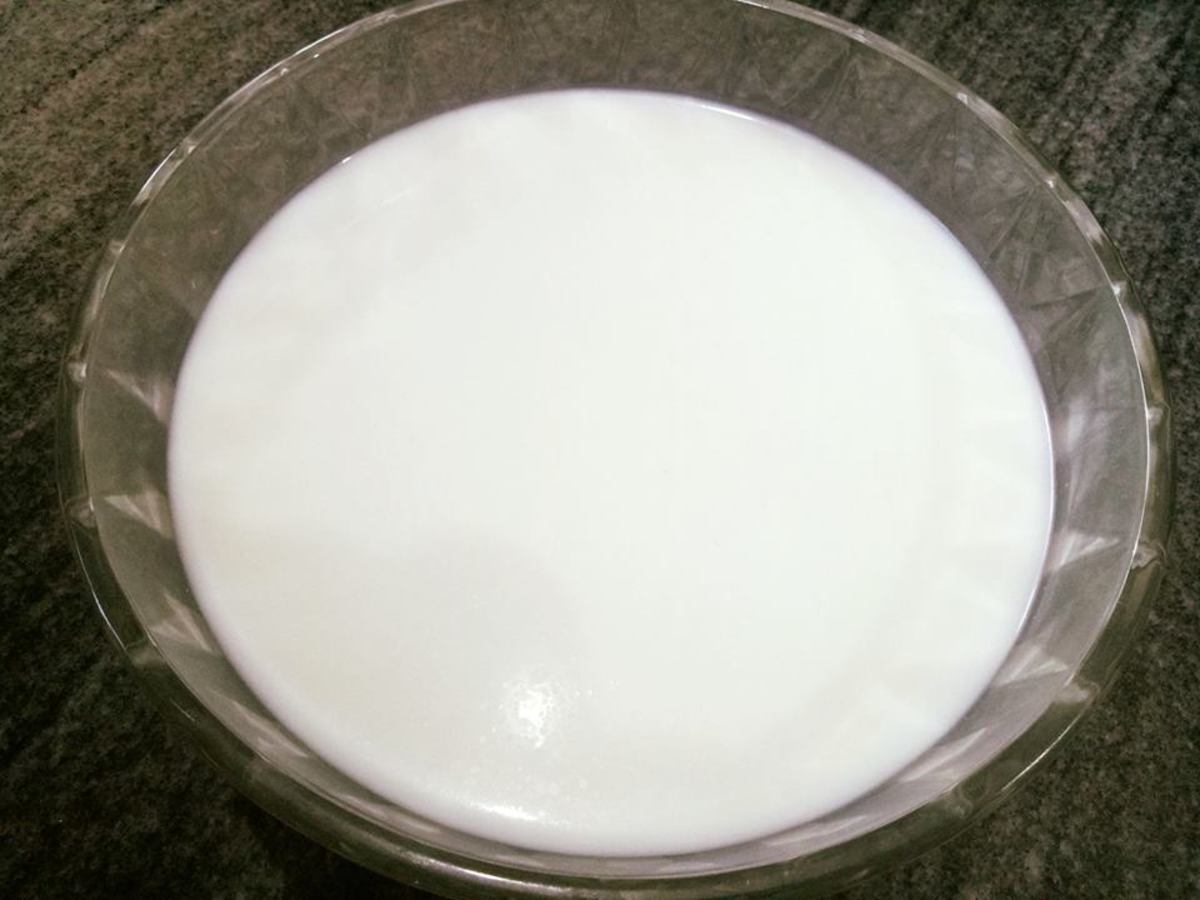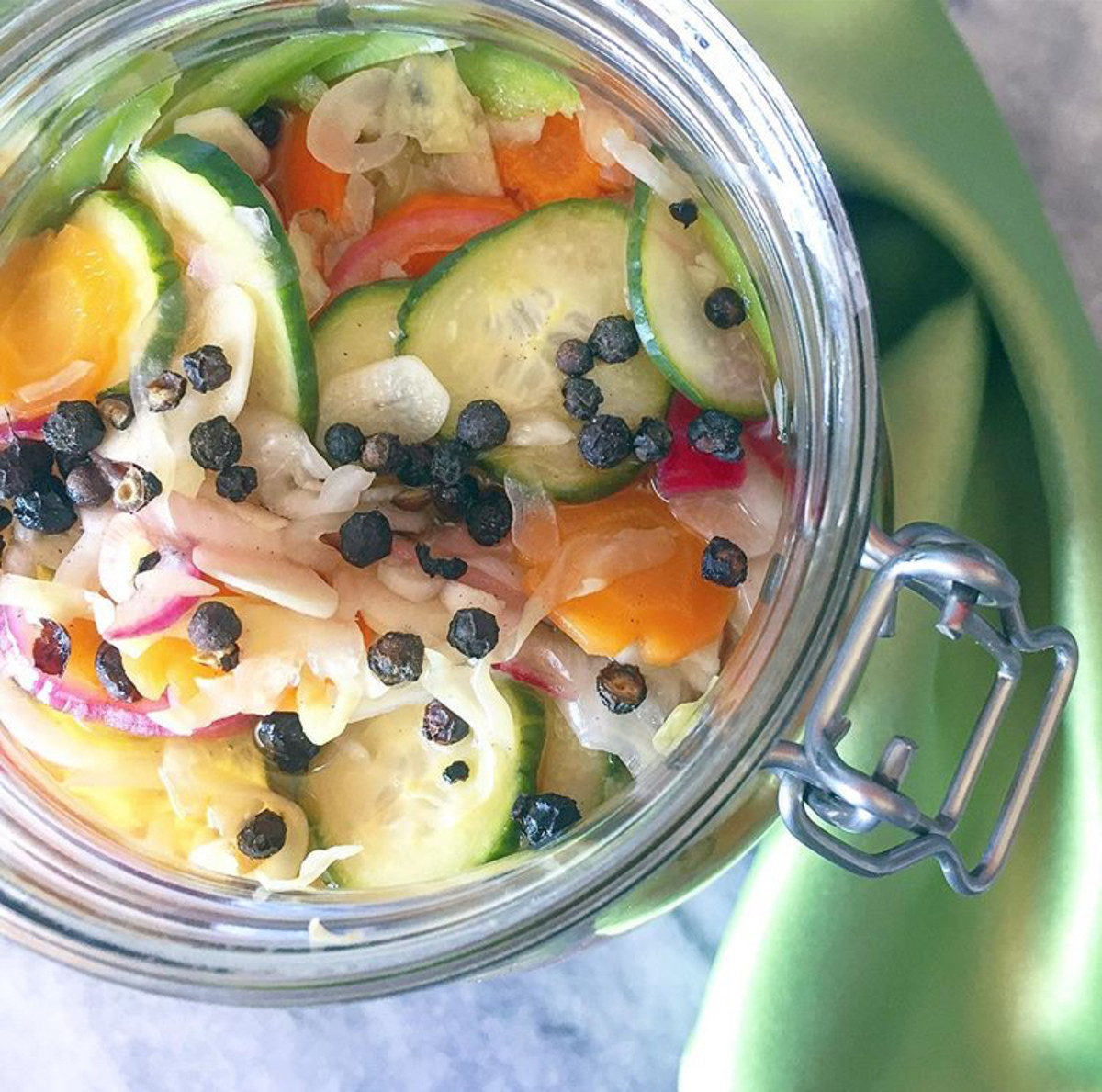Making Natural Healthy Homemade Yogurt | Easy Instructions
Rate this recipe
Homemade Yogurt at its Purest Form
Learning some vital facts about homemade yogurt
Homemade yogurt is one of those food items that can be used with many different ways: in cooking but also in pastry and even in its purest form as plain yogurt. Of course yogurt is one of the healthiest foods. That’s why it is adored by people everywhere without age discrimination, not only for its unique flavor but also for its nutritional value.
Yogurt was known from the ancient times, since there are references from Greek Historian Herodotus in 5th century BC as well as in Indian and Persian civilizations at the same time. In the 16th century it was widely known in the royal circles of France and the monasteries of Western Europe but mostly as a medicine rather than food. Its commercial production and consumption started in the 19th century, especially after World War I.
This family recipe produces natural homemade yogurt which doesn't contain pectin (fruit derived thickener) or gelatin (animal derived thickener). If you are used to commercial yogurts you might find this one less thick in the beginning. By experimenting and adjusting some of the elements you will finally achieve the right result.
Also note that there is no use of yogurt makers or lab ready cultures.
So, what type of yogurt do you like? Is it traditional, strained, with fruit, cereal or honey? Discover all the nutritional virtues of yogurt and at the same time learn how to make a homemade yogurt the easy way.
Homemade Yogurt with honey & strawberries
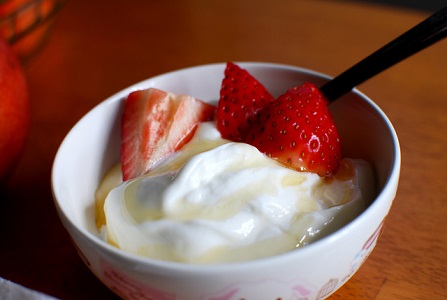
Cook Time
Ingredients
- 1 quart (lt) whole milk, goat/sheep much better
- 4 Tablespoons plain yogurt (favorite brand), with live/active cultures at room temperature
Instructions
- In a large saucepan with cover, pour 1 inch of hot water and arrange inside the ramekins/bowls/jars you prefer to use in making the yogurt. Boil them for at least 5 minutes to completely sterilize them. Turn off the heat and cover the saucepan with its lid. Leave the bowls inside until you are ready to use them.
- Pour the milk in a small saucepan. Place it over high heat and stir gently until it reaches 190 F / 88 C (MUST use thermometer) and starts frothing. This heating process will kill off unwanted bacteria and organisms that live in the milk.
- Remove the saucepan from the heat, cool off in a sink with cold water. Repeat the process (heating-cooling) two more times, always checking the thermometer not to go over 190 F / 88 C. (This is the trick that my mom was doing for a thicker and creamier yogurt).
- Turn off the heat and move the saucepan into an icy basin or cold water. Let the milk cool off stirring occasionally. It is ready when it reaches a temperature of 115 F / 46 C (MUST use thermometer).
- Add the yogurt of your choice (aka starter) and stir up and down, side to side to dissolve completely any lumps.
- Pour the milky yogurt into ramekins or any other ceramic/glass bowls/jars you are using. Cover them with a clean kitchen towel and then with a blanket, in order to create a warm environment.
- Leave your utensils at least for 8 hours in this surroundings without disturbing them until they set up into yogurt. Refrigerate for at least 4 hours before using.
- This type of yogurt can be used as an accompaniment to roasted meats, as a salad dressing ingredient, in dips, pastries, cakes and ice cream. Combine and enjoy it in whatever format you like.
Other Versions of Natural Homemade Yogurt
Greek Yogurt
If you are fan of homemade Greek style yogurt then just strain for 2-3 hours this natural yogurt. Line a colander with a damp kitchen towel (better than cheese cloth) and place it over a large bowl. Pour in the ready yogurt (before refrigerating). Let dripping its natural whey and become thick. Use it in your yogurt dip recipes and if you like garlic do it like a real Greek and create the traditional dip of Greece: “tzatziki”.
Labneh – The Middle East cheese made with yogurt
It is very similar to Greek strained yogurt but in this cheese version you will drain it completely, usually for 12 hours and for best results 24 hours. The yogurt is mixed with salt (ratio: 3 cups yogurt – 1 teaspoon salt), wrapped in cheese cloth, tighten with string and hanged over a bowl. After straining you create small balls that you put on a tray and refrigerate until they are firmed (6-7 hours). You transfer them in sterilized jars, cover them with olive oil and add a spring of thyme in each jar for a Middle East flavor. Serve them on hot pita bread, drizzle with some olive oil and accompany with black olives.
Making an ordinary yogurt to a Greek style yogurt
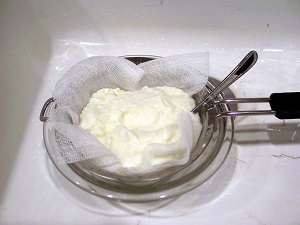
Intolerance of Lactose
The homemade yogurt solution
Yogurt is valuable to people who have problems in metabolism or digestion of lactose (milk sugar). During fermentation, milk bacteria convert most of the lactose to lactic acid, which gives to yogurt its intense flavor.
People with this intolerant have lack of the lactase enzyme that breaks down lactose. When they consume milk-based products, the digestion of lactose is absent. Lactose remains in the intestine, causing flatulence, gases and diarrhea. So with the split of lactose in yogurt, these side effects can be avoided.
Have also in mind that if you have lactose intolerance, you might tolerate Greek strained yogurt better than the other types of yogurt, because straining removes some of the lactose which is found in the whey.
Serve Your Homemade Yogurt With Style

Some Extra Health Benefits of Homemade Yogurt
Yogurt: Elixir of long life
Yogurt is rich in valuable nutrients for humans: high biological value protein, calcium, phosphorus and vitamins of the B complex. There are sufficient quantities of magnesium, potassium and vitamins A and D. Scientific studies show that daily consumption of 1 portion of yogurt significantly improves our lipid profile, reducing the levels of LDL ("bad") cholesterol and increasing the levels of HDL (“good”) cholesterol.
Other less known health benefits of homemade yogurt:
- Reduces the bad smell of the mouth and the harmful bacteria that live on the tongue and saliva.
- Enhances the normal renewal process of skin cells as well as the growth of hair and nails.
- It is beneficial for smokers and for those who consume large quantities of alcohol because it protects the stomach lining.
- In addition to cooking recipes yogurt is widely known and for… beauty recipes. Experts say that we can use it on hands, face, head skin and feet with amazing results.
Yogurt dip to upgrade your party!
